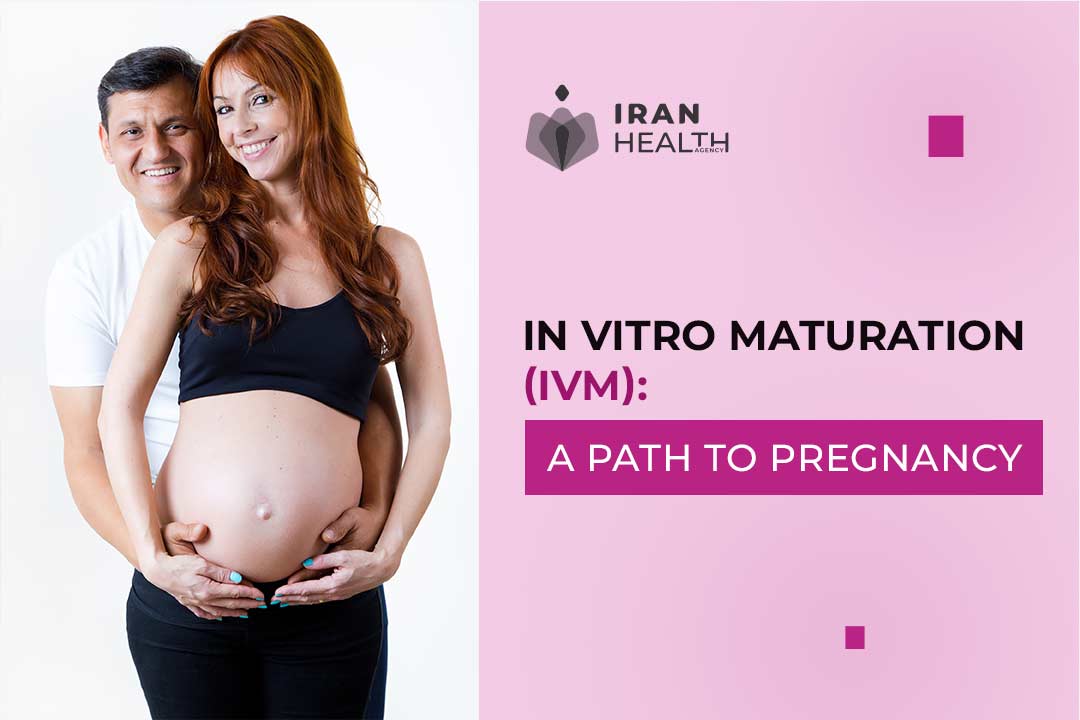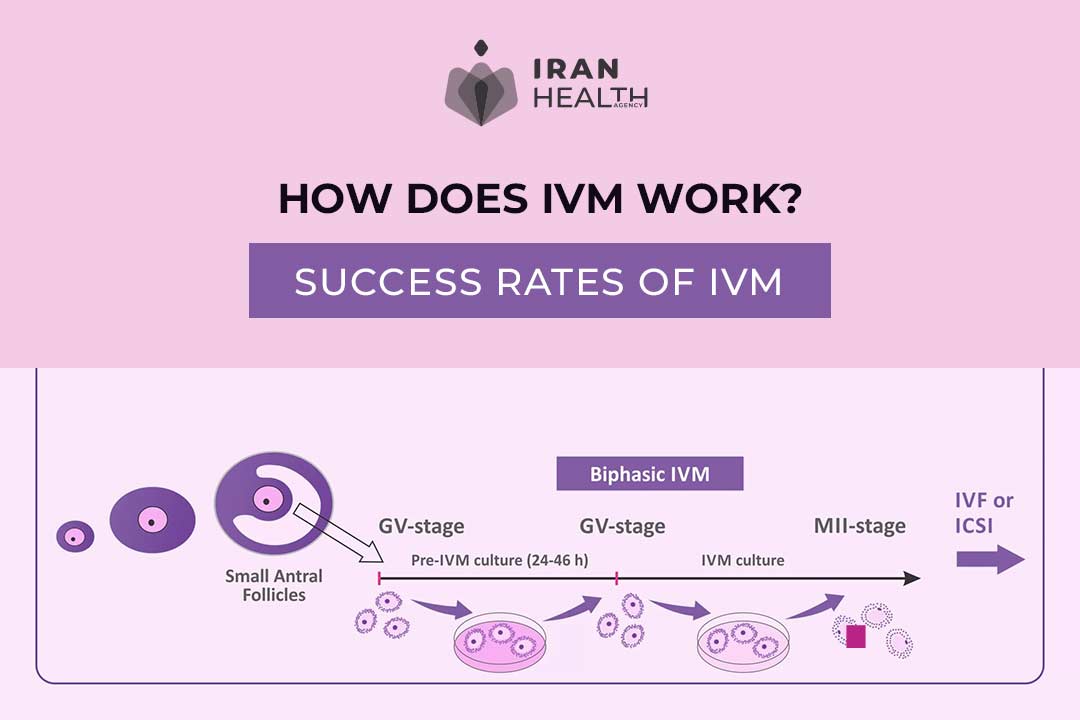In Vitro Maturation in Iran
In Vitro Maturation (IVM):
A Path to Pregnancy
Fertility problems can make the dream of having children seem out of reach for many people. With all of its chemical boost, traditional IVF might not be the best choice. In Vitro Maturation (IVM) is a more gentle method( scientists are still researching it).
Finding out about IVM, a method for maturing eggs outside of the body, gave partners hope again. IranHealthAgency talks about IVM, which can be a way to get pregnant for people who are looking for other options(alternative options for IVF).

What is IVM Treatment?
In vitro maturation, also called oocyte maturation in vitro, is a method for increasing fertility that lets young eggs grow up in a lab instead of inside a person. This method helps women who have Polycystic Ovary Syndrome (PCOS) or who might get too excited from regular IVF drugs.
What is the difference with IVF?
The key difference between IVM and IVF lies in how the eggs are prepared for fertilization:
- IVF (In Vitro Fertilization): In traditional IVF, drugs are used to get the ovaries to make more than one egg. After the eggs have grown, they are put in a test dish with sperm. The kids are then taken to the uterus to be implanted inside the woman.
- IVM (In Vitro Maturation): During IVM, young eggs are taken straight from the ovaries. Then, these young eggs are grown in a lab away from the body before fertilization with sperm through IVF or ICSI. Next, the eggs are moved to the uterus to begin growing.
Here’s a table summarizing the key differences:
| Feature | IVM | IVF |
| Egg Maturation | Stimulated with medication | Matured outside the body |
| Hormonal Stimulation | High | Low or none |
| Number of Eggs Retrieved | Usually multiple | Fewer may be immature |
| Success Rates | Generally higher | Generally lower |
| Cost | Typically more expensive | Potentially less expensive |
How Does IVM Work?
- Immature eggs are retrieved from the ovaries through a minimally invasive procedure.
- The eggs are then placed in a special culture medium that mimics the natural environment within the fallopian tubes.
- Over 24-48 hours, the eggs are monitored and nurtured to encourage maturation.
- Once mature, the eggs are fertilized using sperm through In Vitro Fertilization (IVF) or Intracytoplasmic Sperm Injection (ICSI).
- The resulting embryos are then transferred back into the uterus for implantation and potential pregnancy.
Success Rates of IVM
IVM success rates are generally lower than traditional IVF. Here’s a breakdown:
- Maturation Rate: The percentage of eggs that successfully mature in the lab can range from 23% to 67%, depending on various factors.
- Clinical Pregnancy Rate: The chance of a healthy pregnancy after embryo transfer is around 32%, compared to an average of 40% for IVF.

Cost of IVM Treatment
The price of IVM can change based on where you live, the clinic’s fees, and the medicines you need. Because ovulation-stimulating drugs are not used in IVM, it is usually cheaper than regular IVF.
To give you an idea, here’s a quick comparison:
| Cost of IVF | Cost of IVM |
| Usually costs between $15,000 and USD 30,000, but this depends on where you live and the other things we discussed above. | It can be much cheaper than IVF, sometimes costing only $5,000 to USD 7,000. |
Iran has become a popular place to go for IVF and other fertility methods that are not too expensive. Compared to Western countries, prices can be a lot lower. Even in Iran, it’s important to know that doctor fees can vary.
Finding In Vitro Maturation Clinics
Consulting a fertility specialist experienced in IVM procedures is crucial.
Medical Aspects of In Vitro Maturation
IVM is a relatively new and evolving field within assisted reproductive technologies. While promising, it’s essential to understand the medical considerations:
- IVM might not be right for everyone. If you want to know if IVM is right for you, you need to talk to a fertility expert.
- Ongoing research is exploring ways to improve maturation rates and pregnancy outcomes with IVM.
IVM and Pregnancy: Weighing the Odds
It looks like IVM could help people get pregnant, but there are different success rates and risks that could happen. As we said before, IVM uses less medicine than regular IVF, which lowers the cost of treatment right away, but it also has lower birth rates. However, IVM can be used as an alternative way to get pregnant in some cases, especially when regular IVF isn’t an option.
People who are being treated for IVM may take low-dose oral drugs to make them ovulate in a modified IVM cycle. Every person gets a different set of medicines that are designed to work with their ovaries in a way that lowers the risk of OHSS and other issues that can arise from high-dose fertility drugs.
If someone knows everything there is to know about IVM, they can make smart decisions about their childbearing possibilities. With this different method of getting pregnant, they will understand simultaneously the science and practical parts.
Our team will be happy to provide you with complete information if you contact us: